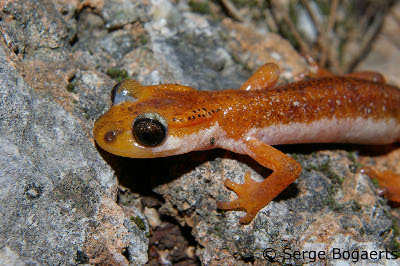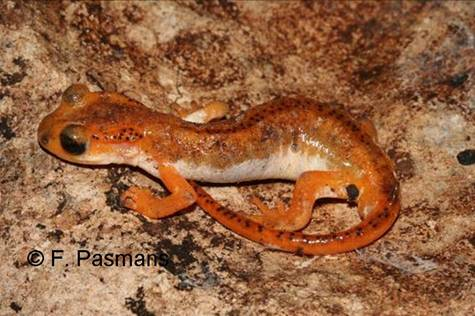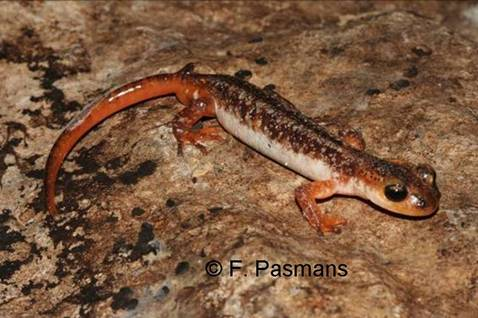
All salamandrids have toxic skin secretions, and newts are highly poisonous in all stages of their life history. Many salamandrids have bright colours and markings that serve as warnings of their toxicity and may be used in defensive displays, with Luschan’s salamander skin varying from salmon-pink to black. A bizarre modification found in salamandrids is the reduction or loss of lungs after evolving from a lunged ancestor.

Males of this family have been seen performing elaborate courtship displays to entice the female into mating, during which they deposit a sperm packet that the female uses to fertilise her eggs. Some females then have a mammal-like gestation of 5-8 months, after which they give birth to fully-developed live young, very rare in amphibians.

Luschan’s salamander is listed as Critically Endangered because it exists in less than 100sq km., all individuals are in only one location, and there is a suspected continuing decline in the extent and quality of its habitat. The species is mainly threatened by its naturally restricted range (about the size of Manhattan Island) making it vulnerable to ecological disasters and climate change, as well as forest fires and over-collection for scientific purposes.
Find out more about our past species of the week >